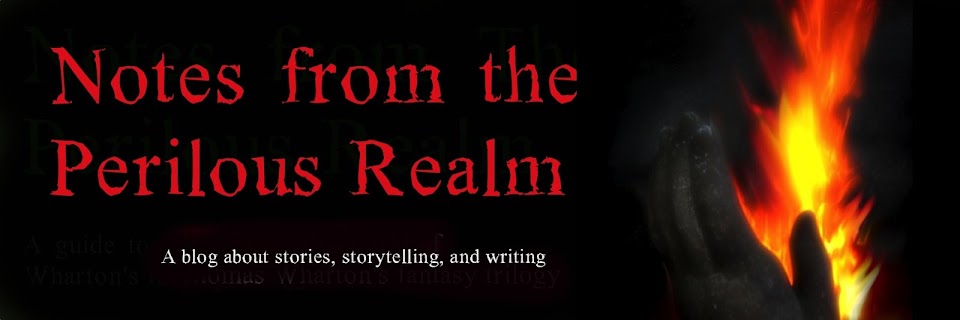Readers have asked for more information about Rowen.
When we first meet her in The Shadow of Malabron, Rowen is nearly fourteen years old. She has pale red hair, dark green eyes, and stands about five feet tall.
Rowen lives in the city of Fable with her grandfather, Nicholas Pendrake the toymaker (and loremaster). The toymaker’s housekeeper, Edweth Little, has also looked after Rowen since she was a small child.
Nicholas Pendrake was married to a weaver and storyteller named Maya Siddarha, from a storyland far to the east of the Bourne called Jataka. They had one child, Gildred.
Gildred Pendrake grew up to become a knight of the Errantry, and was well-known in Fable for her courage, kind heart, and skill as a horsewoman. She married a man named Thomas James Rymer. He was a writer and artist from our world who stumbled into the Perilous Realm and sought Nicholas Pendrake’s help in getting back home (much as Will Lightfoot did many years later). In Fable, Thomas met Gildred and they fell in love, and had a child of their own, Rowen.
Thomas Rymer never returned to his own world. He and his wife and child went to live a quiet life at a farm north of the Bourne called Blue Hill (it was at this spot that Thomas had first entered the Realm). Since Gildred and Thomas were of two different worlds, they decided their child’s family name should be neither her father’s or her mother’s, and so they called her Rowen of Blue Hill, for the place where the two worlds had first met.
Nicholas and Maya Pendrake visited Blue Hill often to see their beloved grandchild. Maya often stayed at the farm for longer periods, after Pendrake’s duties as loremaster called him back to Fable. Maya looked after Rowen during those times when her parents were busy working the fields and tending to the animals on the farm.
When Rowen was two years old, a band of mordog and other Nightbane invaded the Bourne from the north. They burned and ransacked many farms and villages before the Errantry finally drove them from the land.
One of the farms the Nightbane attacked was Blue Hill. A smaller party of mordog came to the farm at dusk. The family dog gave one warning bark before a Nightbane arrow silenced it forever. Gildred was the warrior and so she went to meet the enemy while Thomas ran with Rowen into the woods behind the cottage. Thomas might have escaped with his daughter but he set her down in the concealment of a hollow under a fallen log and ran back to help his wife. They were both killed. Moth and Morrigan of the Tain Shee had been tracking the Nightbane -- they were too late to save Gildred and Thomas, but they found Rowen in the woods and brought her to Pendrake, who arrived not long after them with a contingent of Errantry knights. Pendrake took his granddaughter home with him to the toyshop in Fable.
Both Nicholas and Maya suspected that the attack had not been truly random. They feared that their granddaughter, a child of two worlds, had disturbed the threads of the Realm in such a way that dark powers had become aware of her and wished her harm. And so Maya decided to journey into the Weaving, the mysterious world-within-the- world from which all the threads of Story come. Her goal was to recover the lost, ancient wisdom of the Stewards, knowledge that might protect and help her beloved granddaughter.
Maya never returned from the Weaving, and so Rowen grew up under the care of her grandfather and Edweth the housekeeper. She turned out to be much like her mother in character: feisty, bold, and clever. Rowen loved her grandfather’s stories about her mother, and her greatest wish was to become a famous knight of the Errantry, just like Gildred.
Rowen loved to explore the fields and woods around Fable, and did so often without her grandfather’s permission. He still worried about the dark powers who wished Rowen harm, and so he tried to prevent her from going off alone, but Rowen was very inventive when it came to evading the rules of the house. It was on one of these unauthorized excursions that Rowen encountered a boy in danger, a boy from the strange world her father Thomas had also come from.
The boy’s name was Will Lightfoot, and he was as startled to meet Rowen as she was to meet him….
“Rowen isn’t just some damsel in distress, like the Empress in The Neverending Story. She doesn’t sit idle while Will comes to her rescue. Rowen is more of a modern heroine, a character who should be a feminist icon in literature for young adults.”
Scott Hayes
St Albert Gazette
Illustration by T Wharton






